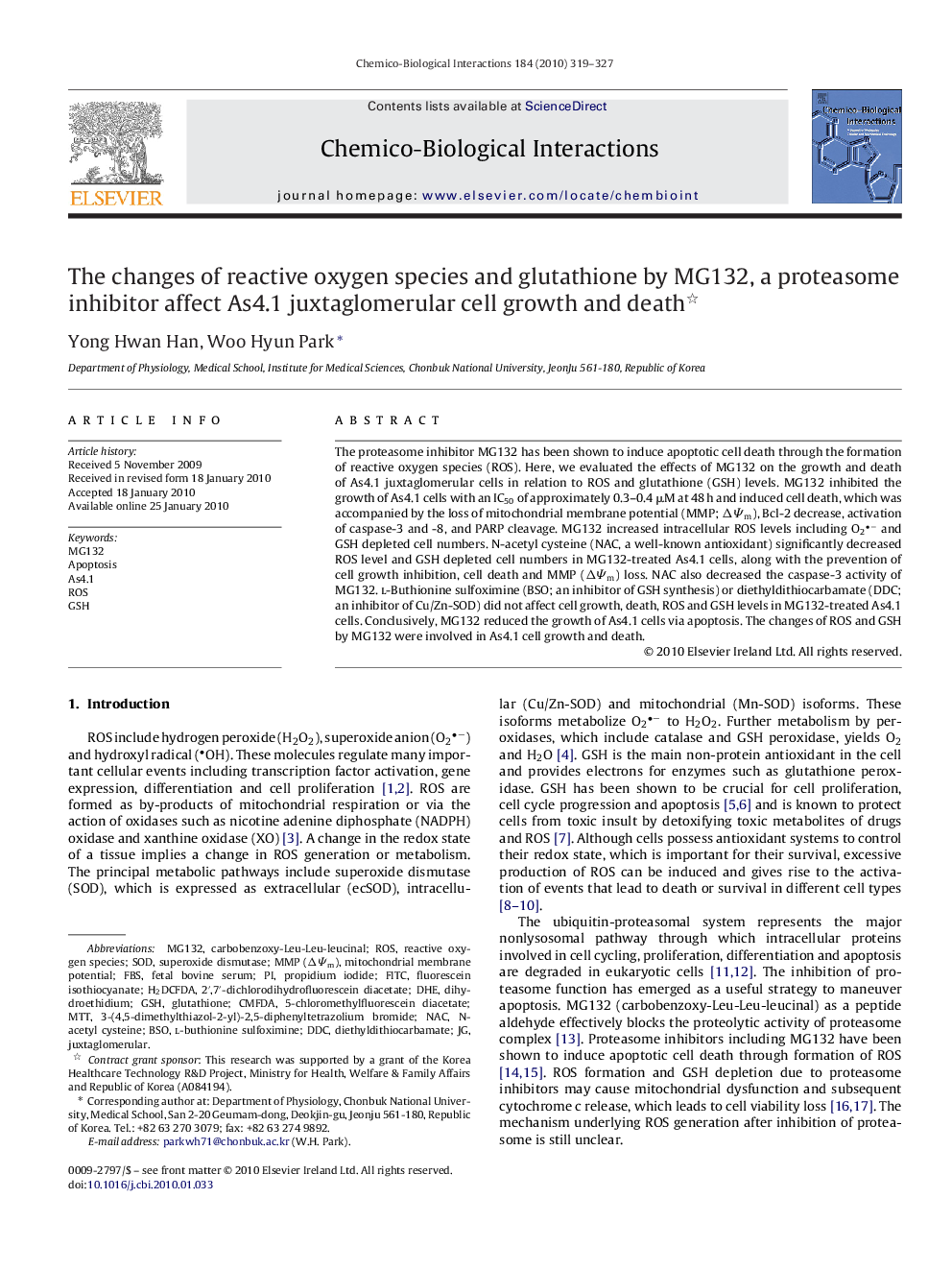| Article ID | Journal | Published Year | Pages | File Type |
|---|---|---|---|---|
| 2581301 | Chemico-Biological Interactions | 2010 | 9 Pages |
Abstract
The proteasome inhibitor MG132 has been shown to induce apoptotic cell death through the formation of reactive oxygen species (ROS). Here, we evaluated the effects of MG132 on the growth and death of As4.1 juxtaglomerular cells in relation to ROS and glutathione (GSH) levels. MG132 inhibited the growth of As4.1 cells with an IC50 of approximately 0.3-0.4 μM at 48 h and induced cell death, which was accompanied by the loss of mitochondrial membrane potential (MMP; ÎΨm), Bcl-2 decrease, activation of caspase-3 and -8, and PARP cleavage. MG132 increased intracellular ROS levels including O2â and GSH depleted cell numbers. N-acetyl cysteine (NAC, a well-known antioxidant) significantly decreased ROS level and GSH depleted cell numbers in MG132-treated As4.1 cells, along with the prevention of cell growth inhibition, cell death and MMP (ÎΨm) loss. NAC also decreased the caspase-3 activity of MG132. l-Buthionine sulfoximine (BSO; an inhibitor of GSH synthesis) or diethyldithiocarbamate (DDC; an inhibitor of Cu/Zn-SOD) did not affect cell growth, death, ROS and GSH levels in MG132-treated As4.1 cells. Conclusively, MG132 reduced the growth of As4.1 cells via apoptosis. The changes of ROS and GSH by MG132 were involved in As4.1 cell growth and death.
Keywords
FBSL-buthionine sulfoximineFITCMG1325-chloromethylfluorescein diacetateCMFDABSOGSHNAC2′,7′-dichlorodihydrofluorescein diacetate3-(4,5-dimethylthiazol-2-yl)-2,5-diphenyltetrazolium bromideddCH2DCFDAMTTROSApoptosisdihydroethidiumdiethyldithiocarbamatejuxtaglomerularSODfetal bovine serumSuperoxide dismutasefluorescein isothiocyanateN-acetyl cysteineDHEMitochondrial membrane potentialPropidium iodideGlutathioneReactive oxygen species
Related Topics
Life Sciences
Environmental Science
Health, Toxicology and Mutagenesis
Authors
Yong Hwan Han, Woo Hyun Park,
